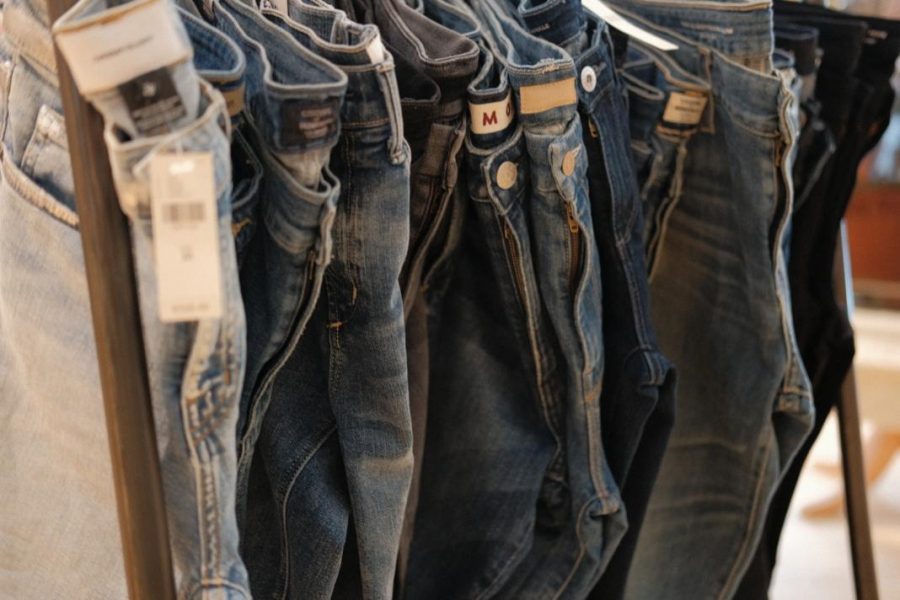A few years ago, Dove released a campaign that immediately grabbed the public’s attention, though not for the reason many would assume. Instead of inciting controversy, Dove asked a question many people don’t often consciously think about: “Do you feel beautiful?” While results varied across borders, the response was overwhelming — over half of the women in the world do not feel beautiful. The attention Dove’s “Choose Beautiful” campaign garnered highlights the cyclical and contradictory thinking behind the beauty and fashion industries, in addition to the amount of money that goes into them.
Beauty Isn’t Free
University of Utah student and former Ulta sales representative Kelly McDonald guessed the beauty industry to be worth $200 million and fashion to be $110 billion
Though she chose numbers that seem large, McDonald actually underestimated both industries. In the United States, the beauty industry generated about $62.46 billion in 2016, and the fashion industry generated more than $250 billion in 2015. These numbers aren’t surprising when one considers the number of people living in the U.S. and how uncomfortable many are with their appearances.
Dove’s study showed that 61 percent of women in the U.S. do not feel beautiful. Internationally, this number fluctuates. In the United Kingdom, it’s 96 percent, China is 86 percent, Brazil is 72 percent and India is 56 percent. The Economist estimated the international beauty industry generates $160 billion a year, and campaigns like Dove’s “Choose Beautiful” are used to encourage the growth of this rapidly expanding enterprise.
“It’s selling an image of the ideal woman who may or may not exist,” McDonald said.
This ideal woman, according to Dove, is someone who chooses to be beautiful through the purchase of Dove products which then embrace her natural beauty. In a world where most beauty products are geared toward women and men with lighter skin tones, plump lips and unblemished skin, Dove’s approach worked. It also raised its profits from $2.5 billion to $4 billion.
After Dove’s success, beauty campaigns and products evolved. Campaigns often take into account what their target audience is looking for. Brands are collaborating with and sponsoring well-liked celebrities and creating cruelty-free and vegan beauty products to expand their reach to people against the use of animal byproducts they are also reaching out to beauty bloggers, Instagram artists or YouTubers to spread the word about new products. And it’s working.
“Analysts at Goldman-Sachs estimate that the global beauty industry … is growing up to 7 [percent] a year, more than twice the rate of the developed world’s [Gross Domestic Product],” an article in The Economist stated.
This growth rate may be shocking at first, but when the average amount spent on beauty products in a single trip is explained, this growth rate fits with the amount of revenue the industry generates in a year.
“My industry experience was in a wealthy area, so I would guess $50 [to] $75 a month. [In] Utah, maybe $25. This is including skin care,” McDonald said.
This time, McDonald’s guess wasn’t far from the average. Women spend approximately $43 per trip when shopping for beauty products. Though this may seem costly to some, new ingredients, products and marketing techniques may have women and men spending more at Sephora and other beauty shops in 2018.
Products like NoTS’s (Noble Through Skin) 28 Remedy Acne Pore Deep Facial Cleanser come in a 4.1 fluid ounce tube, but cost as much as $22 when purchasing through Amazon, about $20 at retailers like Walmart or $16 if one tries their luck on eBay. These products may work well, but their cultivation as part of a high-quality brand makes them an indulgence in almost any budget.
Fashion Thrives on Confidence
While beauty products work to help you feel better about certain parts of your body, they aren’t enough. Many also turn to fashion to improve their self-confidence and appearance.
“You need to wear clothes, but [you want] whatever makes you comfortable and [lets you] express yourself at the same time,” McDonald said.
The balance between comfortable and cute, professional or personal can be hard to find or even expensive. Clothes play an important role in making a first impression, and the fashion industry thrives on this.
The industry itself makes a memorable first impression, with a global market value of $3 trillion. Accounting for 2 percent of the GDP, the fashion industry encompasses everything from everyday clothing to sports footwear.
According to Fashion United, “The womenswear industry is valued at $621 billion. The menswear industry is valued at $402 billion. Childrenswear had a global retail value of $186 billion.”
The other $1.8 trillion is divided among bridalwear, sports footwear and luxury goods.
While it makes sense for bridalwear and luxury goods to cost more than everyday clothes, many shoppers have noticed increases in cost in similar items. Whether it’s going a size up on a blouse or looking at similar sweaters from the men’s and women’s departments, the cost can be different.
The cost of clothing fluctuates not only with the economy — it takes into consideration the type of fabric, if it is meant for men or women, the type of dye used to color the fabric and the season. Some designers even raise the price of women’s clothing simply because women are more likely to pay more for fashion than men — though men are more likely to pay more for sneakers than women.
Man or woman, everyone has a right to feel comfortable and beautiful in their own skin, whether that’s through choosing to be beautiful or doing so through using products that help raise confidence.
@ladyofth3lak3


